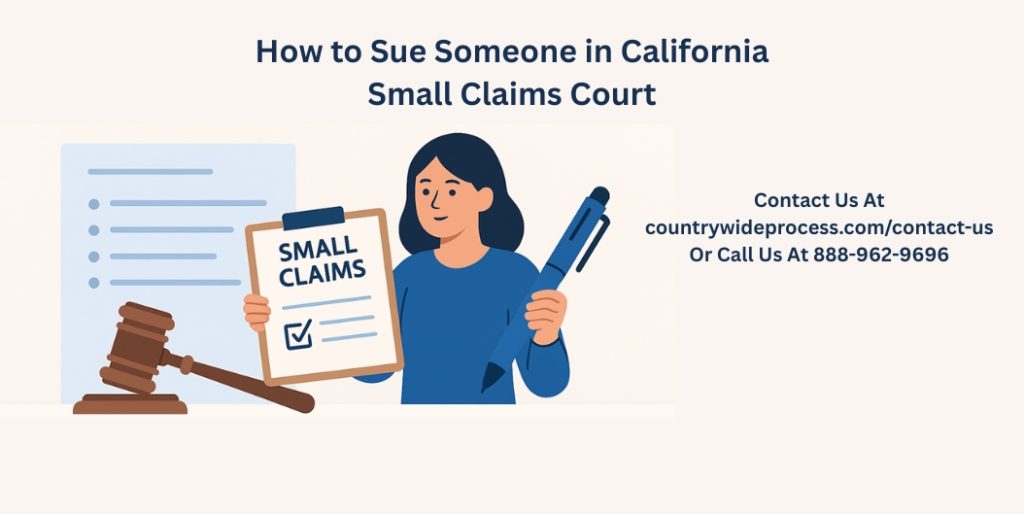Suing someone in California Small Claims Court is a straightforward way to resolve a legal dispute without needing a lawyer. Whether it’s a disagreement over unpaid services, property damage, or a broken agreement, the small claims process is designed to help everyday individuals and small business owners seek justice in a timely and cost-effective way.
Small claims court is intended for simpler legal issues involving limited dollar amounts. In California:
Common reasons for suing in small claims court include:
Learn more about what qualifies as a valid case and what documents you’ll need here: What You Need Before Starting a Claim
Make sure you’re suing the right person or business entity. If it’s a business, verify their official name with the California Secretary of State or the local business license database. Incorrectly naming the defendant can result in a dismissal.
California requires that you first ask for payment before filing your case. This step is called making a “demand”. Ideally, put your demand in writing and give a deadline to resolve the issue before you take legal action.
Complete Form SC-100: Plaintiff’s Claim and Order to Go to Small Claims Court.
You may also need:
You can fill these out manually or use an online guided interview to complete and file them.
Explore our platform that helps you prepare your forms and generate everything you need: Prepare, File, and Serve
File your claim at the correct courthouse:
Filing fees range from $30 to $75 depending on the amount you’re suing for.
You can file:
You are legally required to notify the defendant. This is called service of process. It must be done by someone 18 or older who is not a party to the case. Options include:
The defendant must be served at least:
Gather all supporting documents:
Create a timeline of events to explain your side clearly and briefly to the judge. Dress respectfully and arrive early.
At the hearing, both sides will present their evidence and answer the judge’s questions. The judge will usually make a decision the same day or mail it within a few weeks.
If the judge rules in your favor, the court will issue a judgment. If the other party doesn’t pay voluntarily, you may need to collect using:
Our self-guided online platform walks you through each step of the process. We also offer professional filing and service of process throughout California.
Start here: countrywideprocess.com/contact-us or call (888) 962-9696
Conclusion
Suing someone in California Small Claims Court is easier than most people think. With the right preparation and guidance, you can present your case confidently and recover what you’re owed without the hassle of expensive attorneys.

Countrywide Process
May 16, 2025